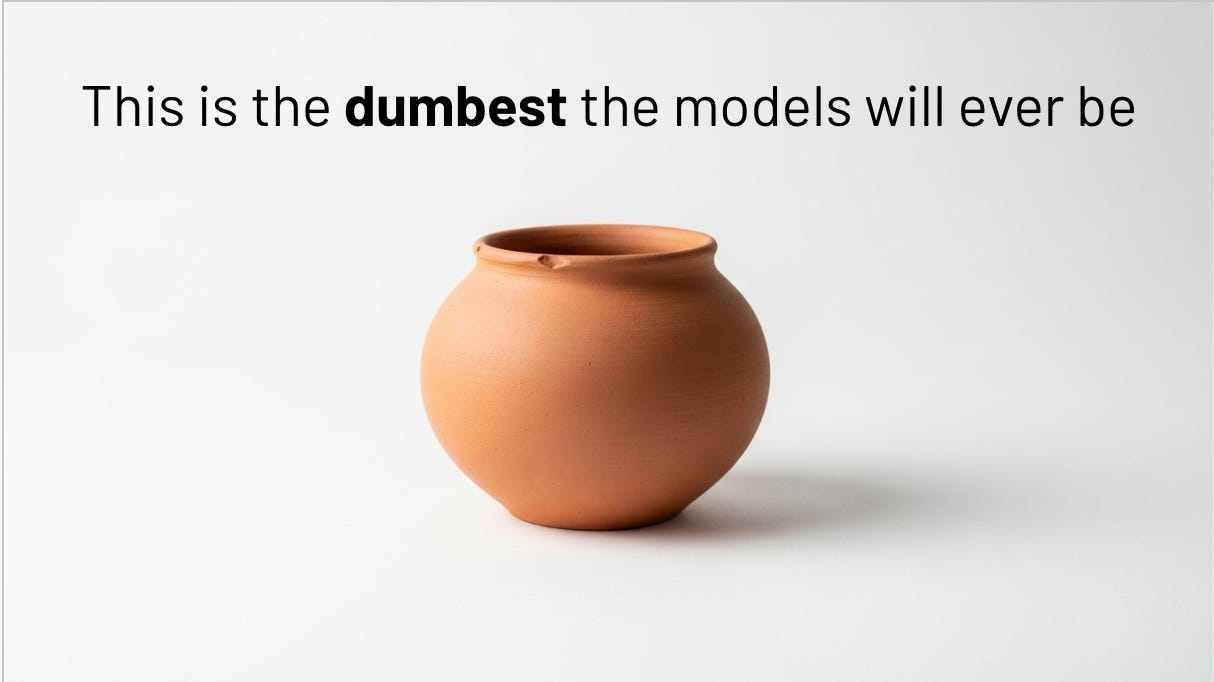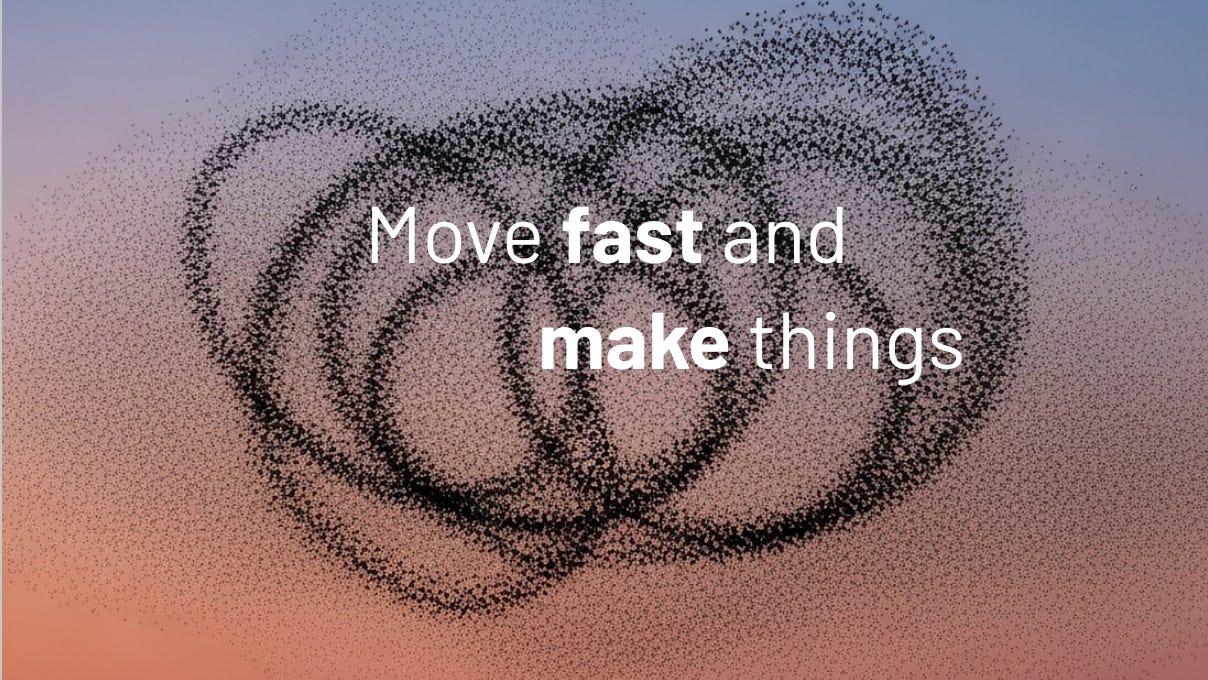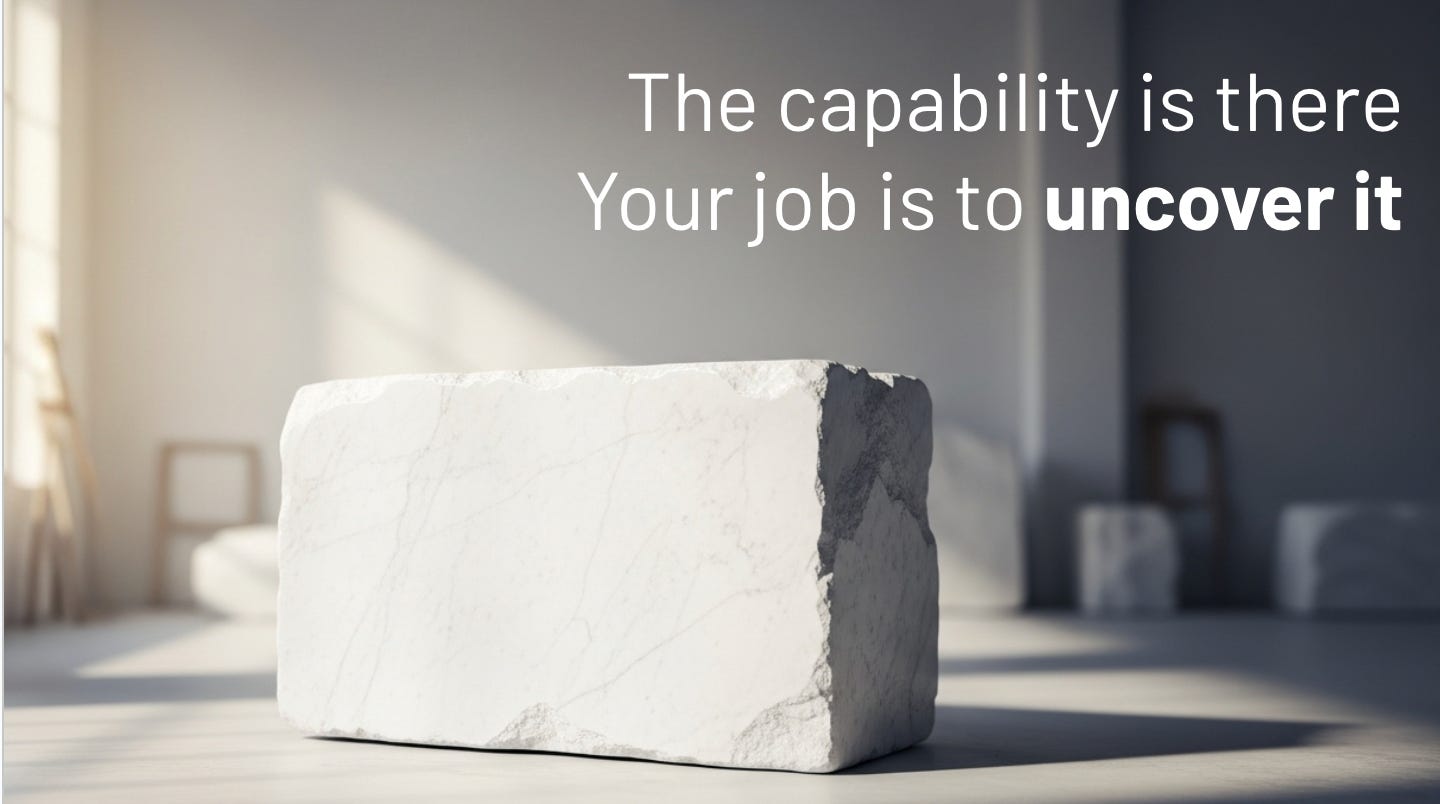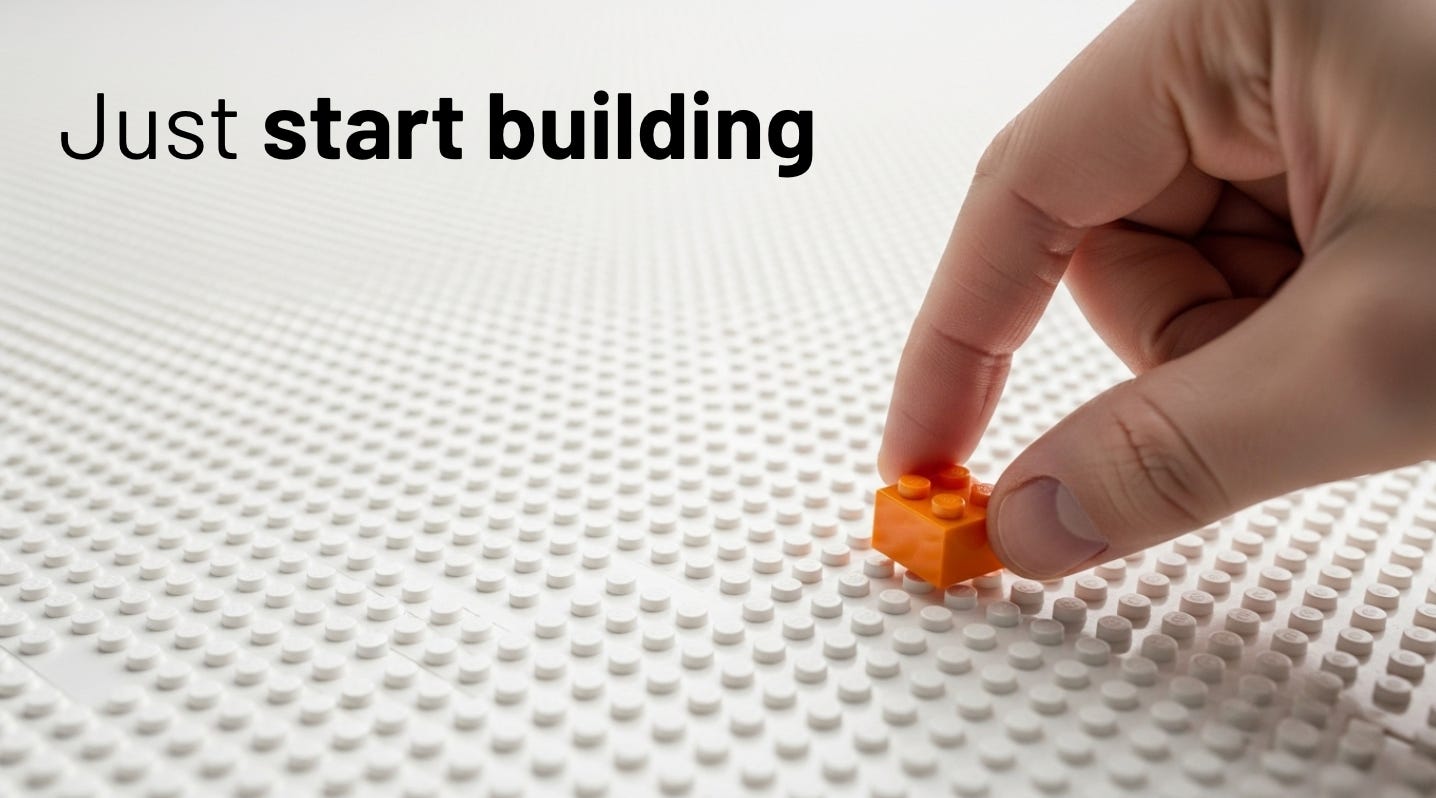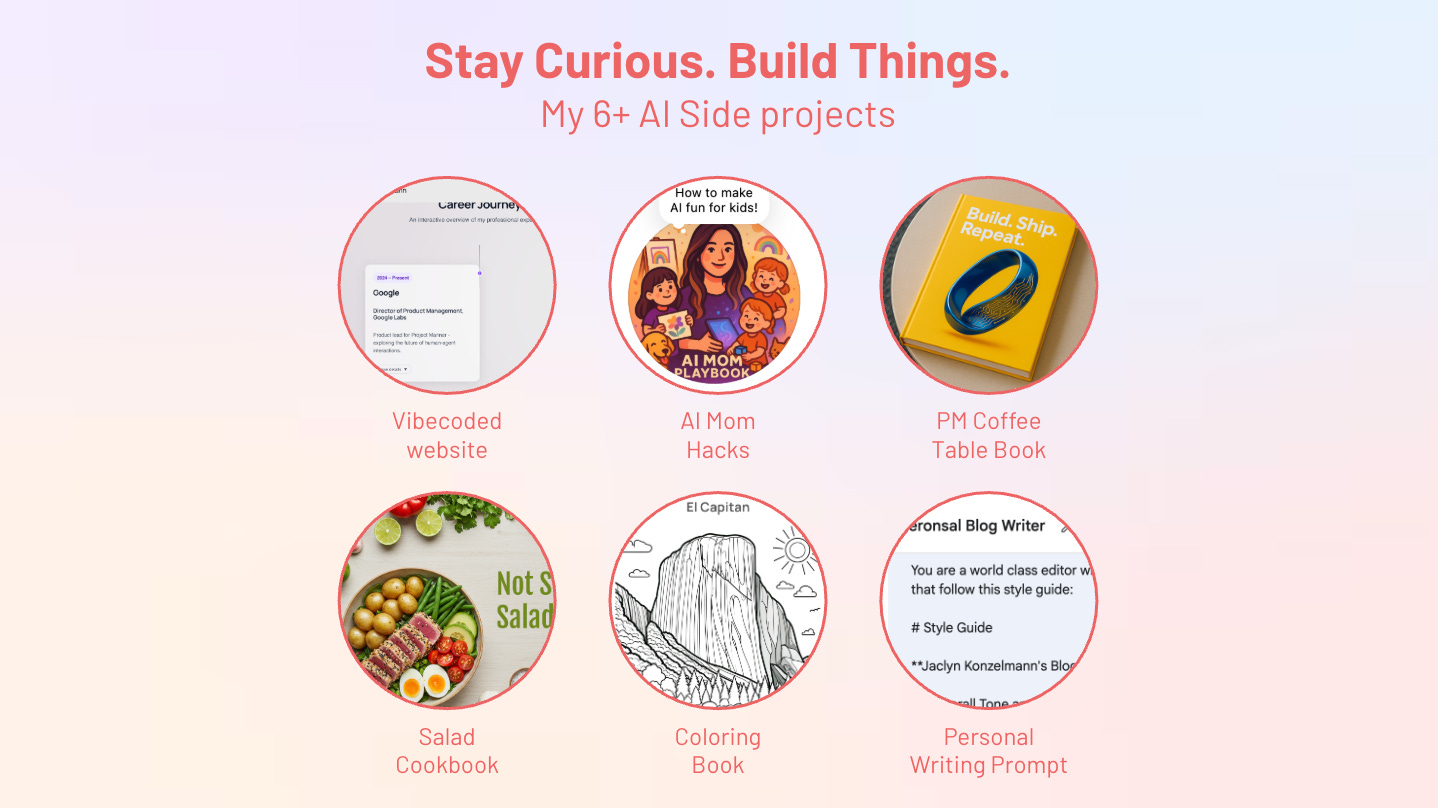The old product development playbook is outdated. Here’s what I’ve learned about navigating this new, breakneck world.
My Advice for Building AI Products
Last week, I had the privilege of giving a keynote lightning talk to a large group of Google PMs. As I prepared, I found myself obsessing not just over the key points, but over the imagery I used to convey them.
I find that powerful visuals make ideas stick, and with today's amazing image generation models, I spent a good deal of time making sure the narrative was captured in both my words and my slides.
I want to share the highlights of that talk with you. These are the lessons and images that have become my current anchors for thinking about how to innovate with AI.
After more than 15 years of building products, there has never been a more exciting time to be building.
The reason is simple: as incredible as today’s AI models are, this is the dumbest they will ever be.
This reality leads to the familiar advice to move fast and make things.
And while I agree, that often leaves us with the next, more difficult question: What should we build, and how should we think about building it?
Here are the key lessons I can't get out of my head.
1. Focus on the Impossible, Not Just the Hard
The pace of AI progress is staggering. This speed can paradoxically trap us into thinking too small, leading to incremental features that feel dated the moment they launch.
An engineer on my team recently shared a quote that perfectly captures the necessary shift in mindset: “Instead of focusing on hard problems that have been made easy by AI, focus on impossible problems that have been made hard by AI.” This is the anchor to stress-test your ideas against.
Think about the evolution of location services. I remember printing directions from MapQuest in the late '90s. Then, in 2005, Google Maps arrived and felt like magic. More recently, I traveled to Canada with my three children, all under the age of four, and I had AirTags on each of them. I take for granted that I can track their location with precision.
But that "magic" took a long time to become table stakes. From MapQuest’s debut in 1996 to Apple's AirTags in 2021, that was a 25-year arc. Today, that cycle of "wow" to "what's next?" is compressed into months, not decades. If you’re not aiming for what feels impossible today, you’ll be obsolete by tomorrow.
2. Treat the Model Like Marble
While we must plan for a future where models are vastly more capable, we can’t ignore the power they hold right now. The current generation of models can already do magical things, but that magic isn't just handed to you. You have to uncover it.
The mental image I use is this: treat the model like a giant, raw block of marble. It’s our job as builders to see the art within and skillfully chisel it out. The question is, what will you make? Will you chisel it into an epic sculpture of an athlete, like the Venus de Milo or the Statue of David? Or will you shape it into something functional and beautiful, like an ornate fountain?
The models are the raw material; your craft, taste, and ingenuity are the tools. Getting the behavior you want takes more than a one-line prompt. It requires a system.
Prompt Engineering: Spend real time on your prompts. They are the primary interface to the model's capabilities.
Chaining: Think about how to chain multiple prompts together, where the output of one becomes the input for the next.
Context: Figure out what external information is relevant to bring in. The right context is often the difference between a generic response and a brilliant one.
This is the work. The "chiseling" is how you turn raw potential into a polished, useful, and delightful experience.
3. Build to Develop Your Intuition
So how do you learn to see the sculpture in the marble? You start building.
You have to get your hands dirty. Thankfully, it's never been easier to go from idea to prototype. Tools like Google’s Stitch can turn ideas into UX mocks for Figma or code. You can visually code in the Gemini App. Google AI Studio provides a whole environment for building with Gemini. The barrier to entry has collapsed.
But "building" doesn't have to mean a fully functioning application. It means engaging with the technology in a tangible way to develop your own intuition.
I personally have at least a half-dozen AI side projects going at any time. They range from a collaborative AI-powered cookbook to a fun Instagram account for AI-generated mom hacks.
These projects aren't necessarily meant to become startups. They are my training ground. They give me a reason to experiment, to push the models, and to get a feel for what’s possible today and what’s just around the corner.
The playbooks of the past, built for slower cycles of innovation, won't cut it. The future belongs to those who can think impossibly, sculpt with intention, and build relentlessly to sharpen their own taste.
So, stay curious. Build things.
The marble is on the table. What will you make?
Build. Ship. Repeat.
Another project I’m actively working on is a PM Coffee Table Book I’m calling Build. Ship. Repeat. It’s full of short, helpful, and impactful statements that keep me motivated and remind me about the important lessons for building AI Powered Products. As a thank you to my paid subscribers, I’m sharing the working draft below.
Keep reading with a 7-day free trial
Subscribe to Thursday Thoughts on AI to keep reading this post and get 7 days of free access to the full post archives.




